Young Sheldon started as a prequel to The Big Bang Theory. That was the pitch, at least. But pretty quickly, it moved in a different direction and found its own pace. The focus is on Sheldon Cooper as a boy, set in the invented town of Medford, Texas. He is bright, sometimes too bright, and the people around him often seem unsure how to respond. It turns into a story about a gifted kid trying to grow up in a family that doesn’t quite move at his speed.
On screen, the world looks like small-town Texas. Wide streets with little houses, a church that could be anywhere in the South, and spaces that feel familiar even if you have never been there. It's hard to pin down why it feels so convincing, but that mix of modest homes and quiet corners gives the setting its weight.
The reality is different. None of the core locations was filmed in Texas. The entire production happened in California, with most scenes created in Burbank studios and a few exteriors filmed around Los Angeles’ San Fernando Valley. Knowing this does not break the illusion. It highlights how television can turn a handful of ordinary places into a convincing version of another state.
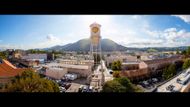
Studio filming
Most of the show’s heart was built indoors. The Cooper home, Sheldon’s room, and the hallways that carried his quick steps were all recreated inside Warner Bros. Studios in Burbank. The production used Stages 12 and 23. The Big Bang Theory was filmed in the same lot on Stage 25, which kept the connection between the series. There was once mention of Stage 6, but consistent records and location guides point to 12 and 23 as the spaces used through the run. Inside those soundstages, the show created the kitchen with its warm yellow glow, the small living room where conversations stretched, and the familiar setting that viewers now associate with the Coopers.
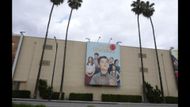
Young Sheldon filming locations: exterior sites that shaped the series
The production also stepped outside. Three exterior sites became essential to the geography of Young Sheldon.
The Cooper house sits at 5501 Morella Avenue, in North Hollywood, inside the Valley Village area. Nothing fancy at first glance, just a ranch-style home with a wide patch of grass out front and tall trees that cast a lot of shade. That was enough for the show to turn it into a Texas suburban backdrop. On screen, it becomes Medford. In real life, it is still somebody’s home, and guides keep repeating the same advice: it is private; better not to bother whoever lives there.
Not too far from that spot stands the First Christian Church of North Hollywood, on Colfax Avenue. It showed up right at the beginning of the series, especially in the episode Poker, Faith and Eggs. In the story, the church turns into the stage where young Sheldon faces his pastor during Sunday service, a quiet building suddenly carrying more tension than expected. The proximity between the real house and the church helped the production keep the family’s world close in Los Angeles.
The third key location is the school. Sheldon, only nine, attended high school, and the building chosen was Van Nuys High School at 6535 Cedros Avenue. Unlike many productions that rely only on façades, Young Sheldon used the interiors, too. The hallways, the gymnasium, and even the football field were all filmed there. The episode where Sheldon fears catching the flu shows him running outside across the field, with the small red gym building in the background.
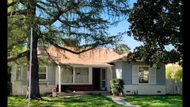
Iconic settings
These settings became part of the series' memory. The Coopers’ kitchen, where daily chaos unfolded; the North Hollywood church, which turned into a stage for arguments; and the corridors of Van Nuys High, which echoed with the voice of a boy too young for that environment. Each place was transformed into something symbolic.
Though none of these sites are in Texas, together they created a believable world. The combination of controlled interiors and familiar exteriors turned California into the stand-in for Medford.
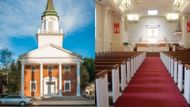
Audience and reception
Young Sheldon wasn’t just accepted by audiences. It was welcomed in a big way. When it premiered in 2017, more than 17 million people tuned in across the United States, making it one of the strongest comedy debuts of that decade. Numbers like that don’t come often.
Reviews followed with steady support. The first season landed a 63 out of 100 on Metacritic, a sign of generally favorable reactions. Rotten Tomatoes went further, pointing out that the series offered a fresh and pleasant perspective. The softer rhythm, more reflective at times than The Big Bang Theory, stood out to critics. That difference mattered. It helped the show step out of the shadow of prequel status and shape an identity of its own.
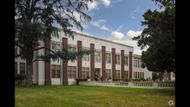
Mapping the production
Mapping the filming is simple. Interiors came from Warner Bros. in Burbank. The house and the church were in North Hollywood, only a few blocks apart. The school was in Van Nuys, about six miles away. Texas itself was never part of the production. Yet the San Fernando Valley, framed in specific ways, became East Texas for viewers who never questioned it.
Closing
Revisiting these filming locations shows how television builds memory. A real address in North Hollywood, a church on Colfax Avenue, a high school in Van Nuys, and the controlled space of a Warner Bros. soundstage together became the childhood world of Sheldon Cooper. Viewers accepted this geography without hesitation, treating it as East Texas. That is part of the quiet success of Young Sheldon. The show turned ordinary Californian backdrops into something timeless, a version of Texas that never truly existed yet still feels strangely familiar.
